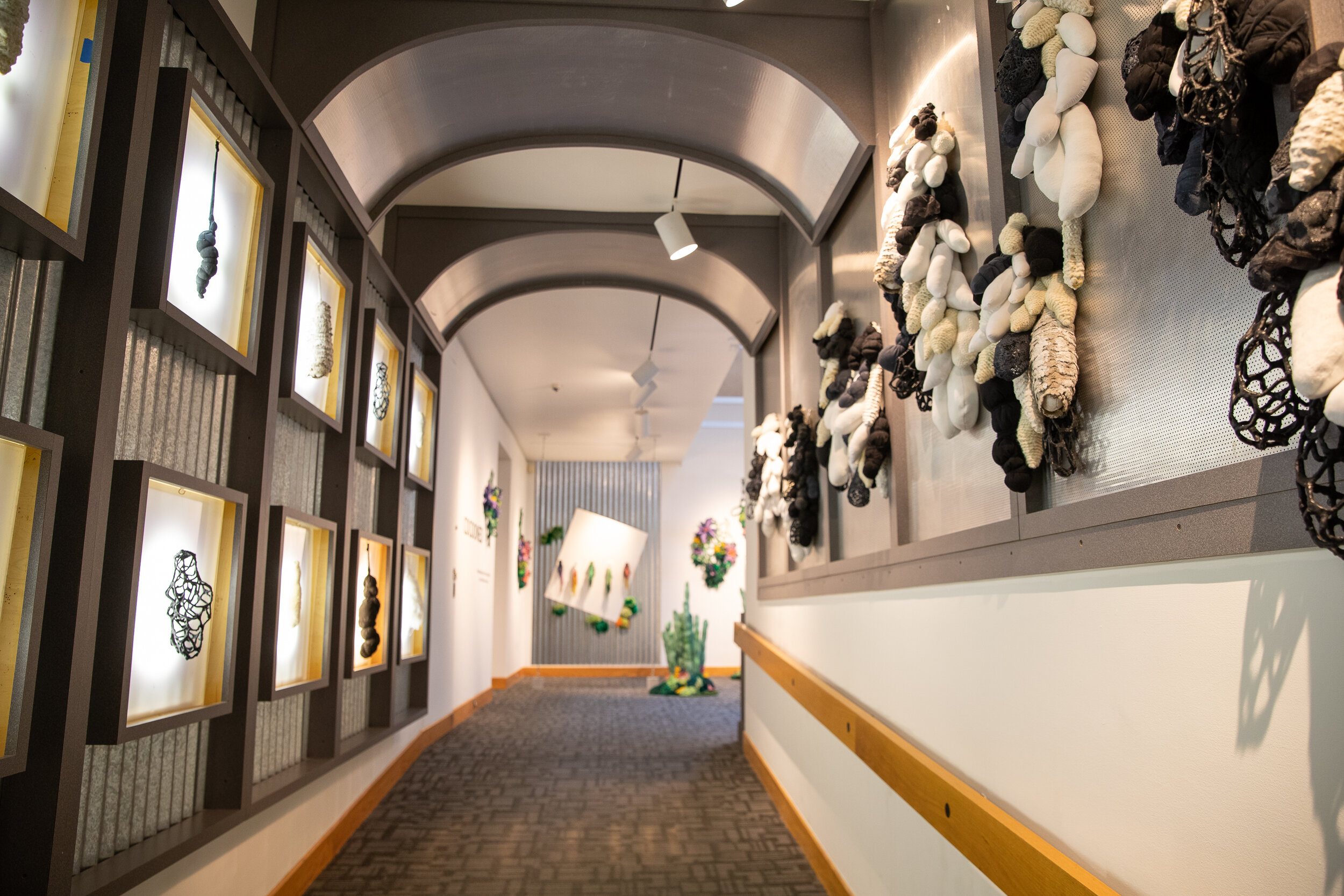
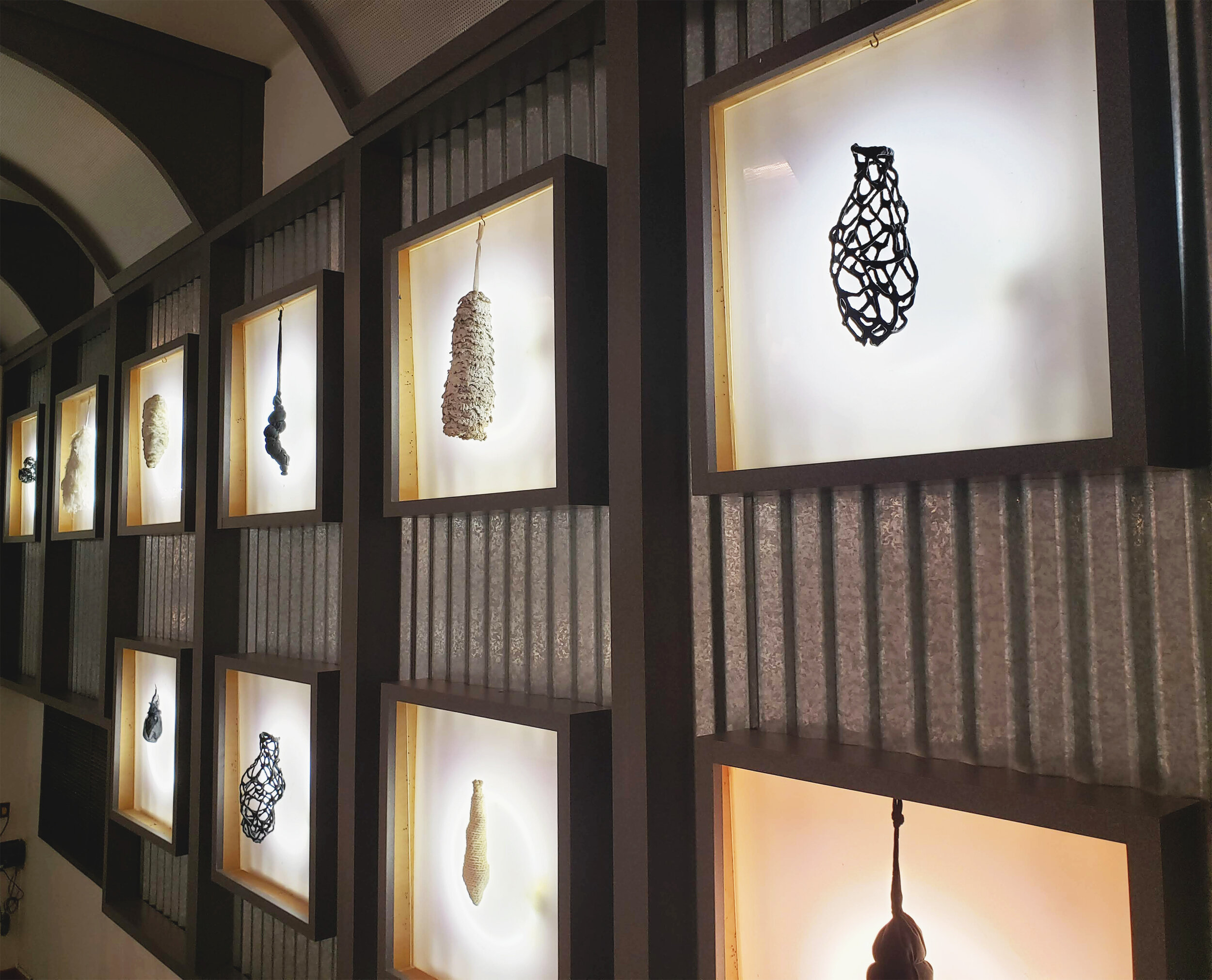
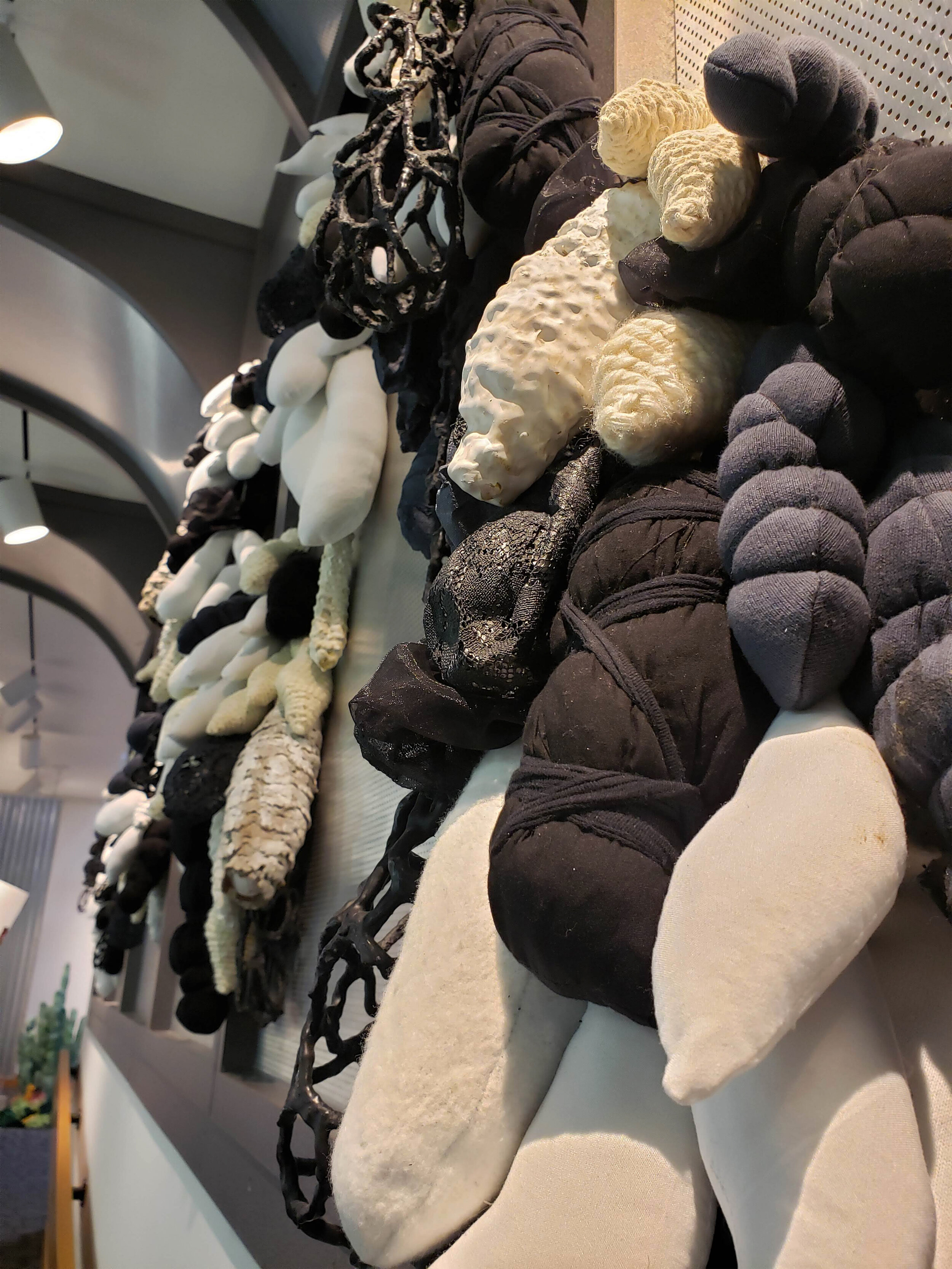
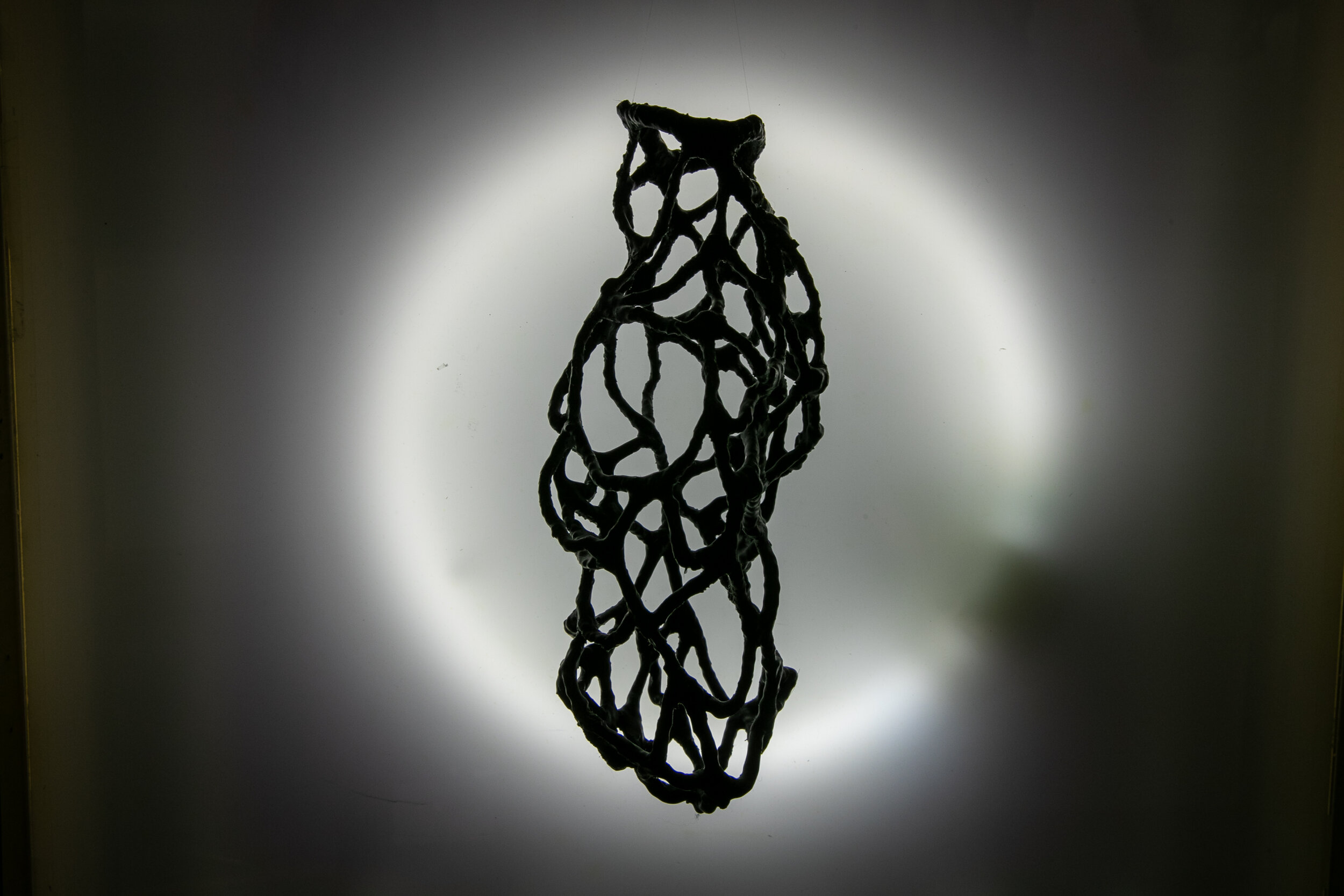
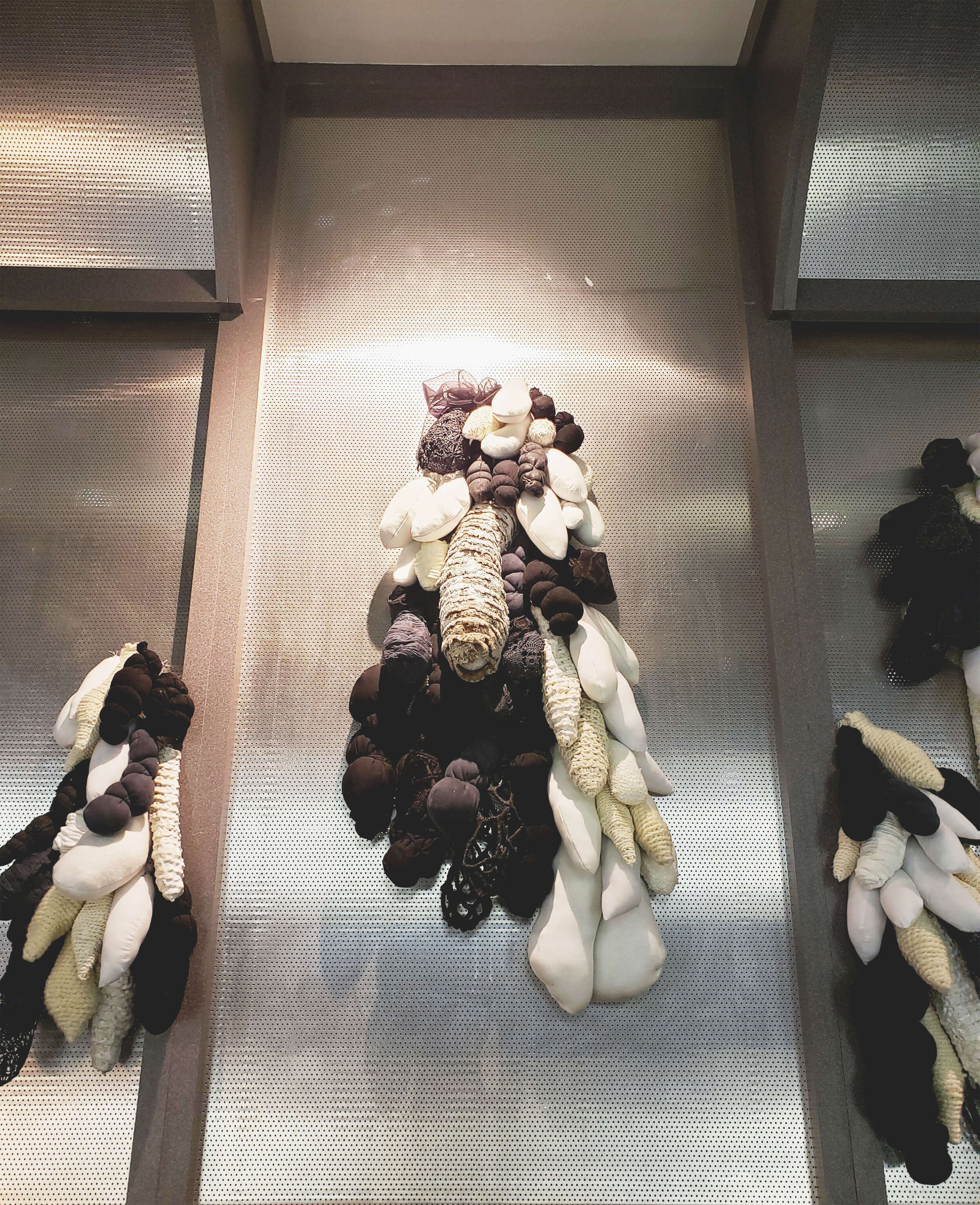

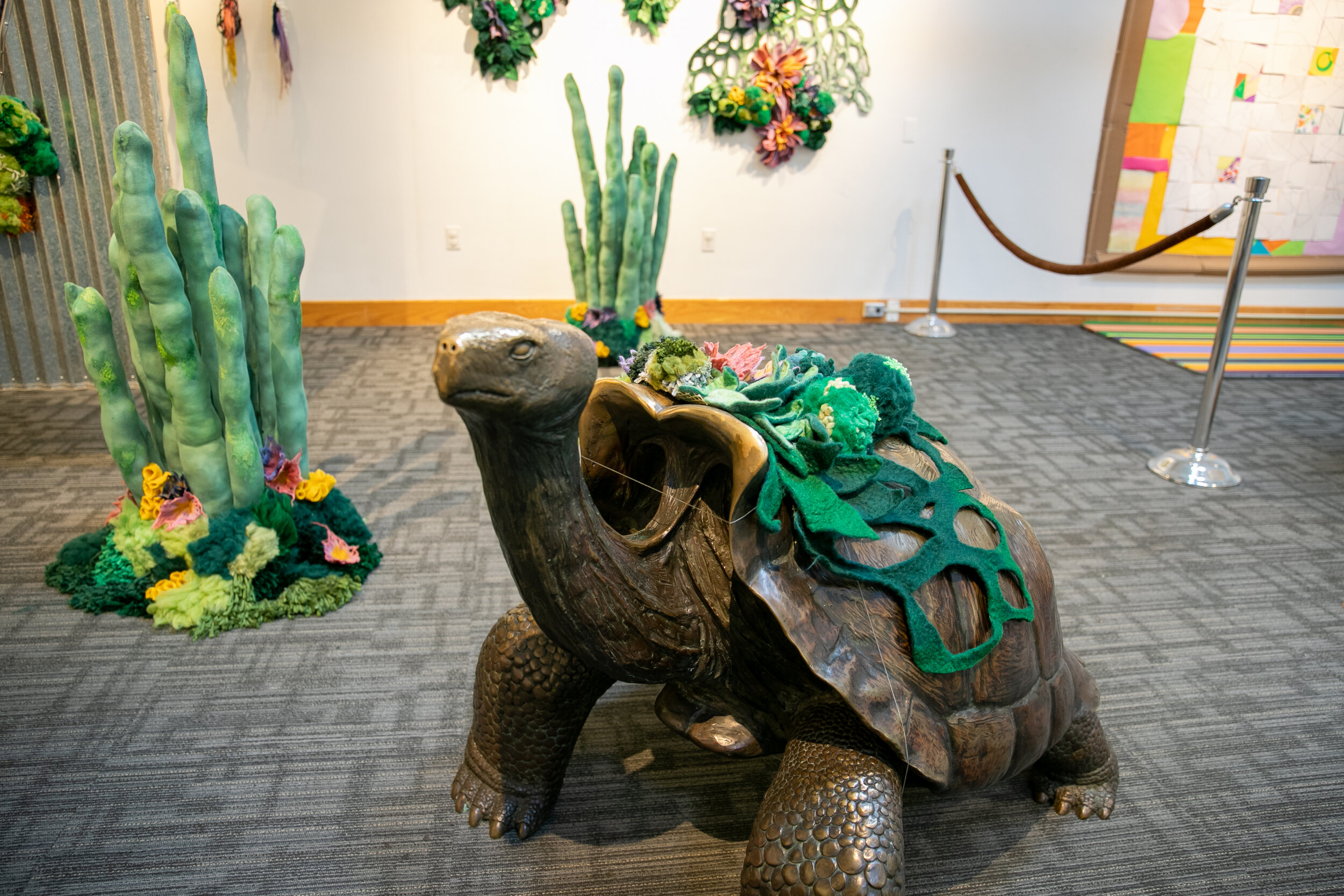
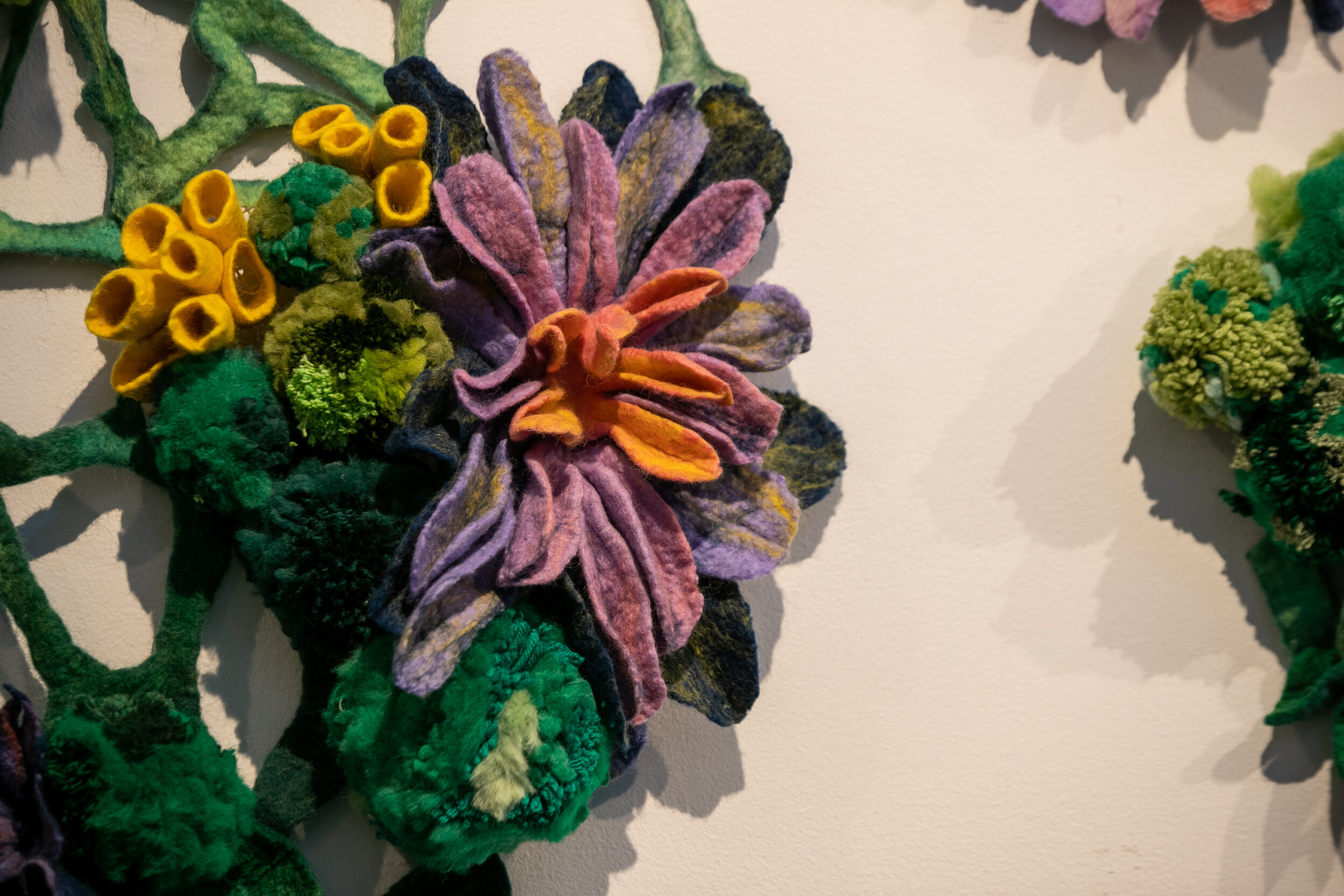

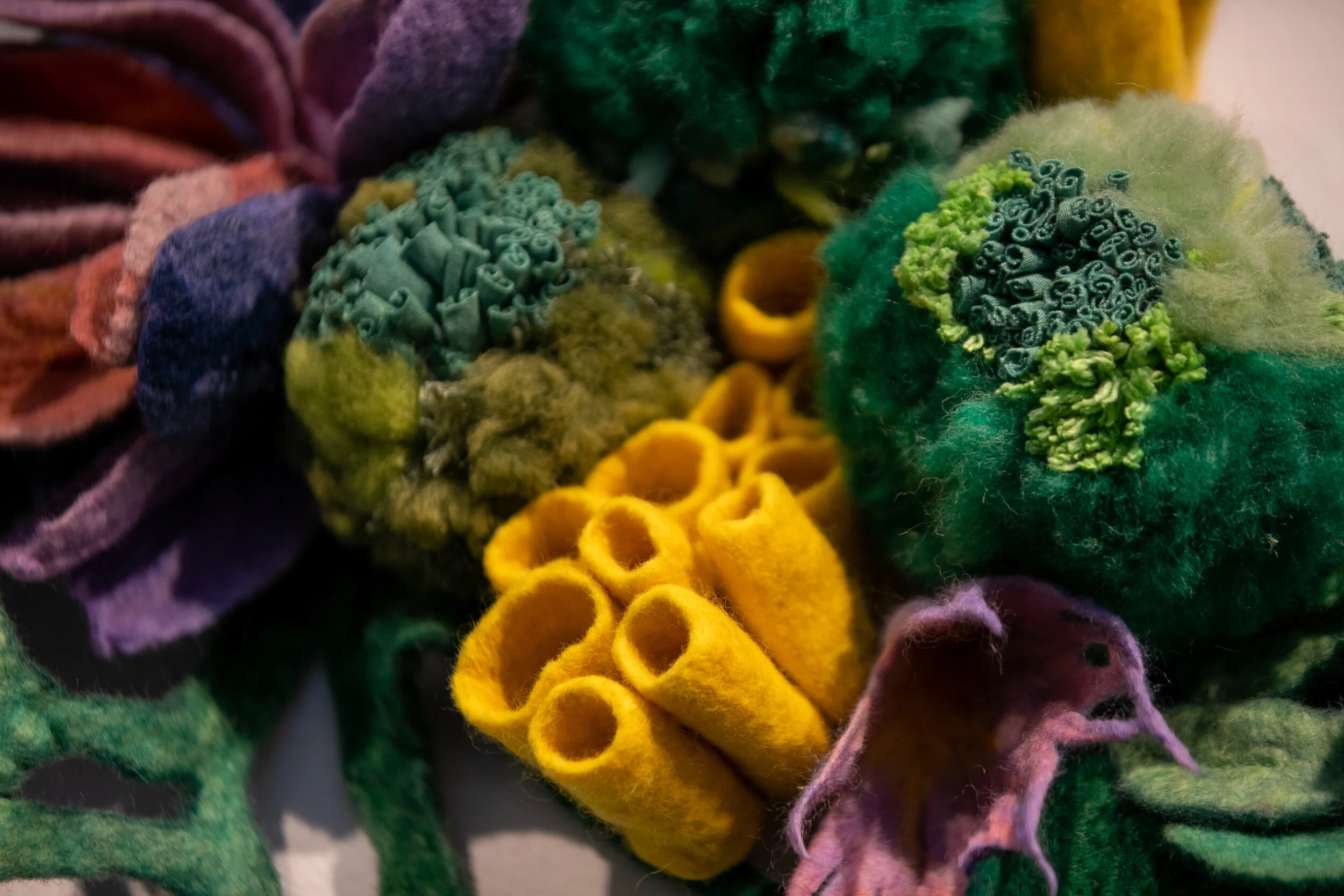
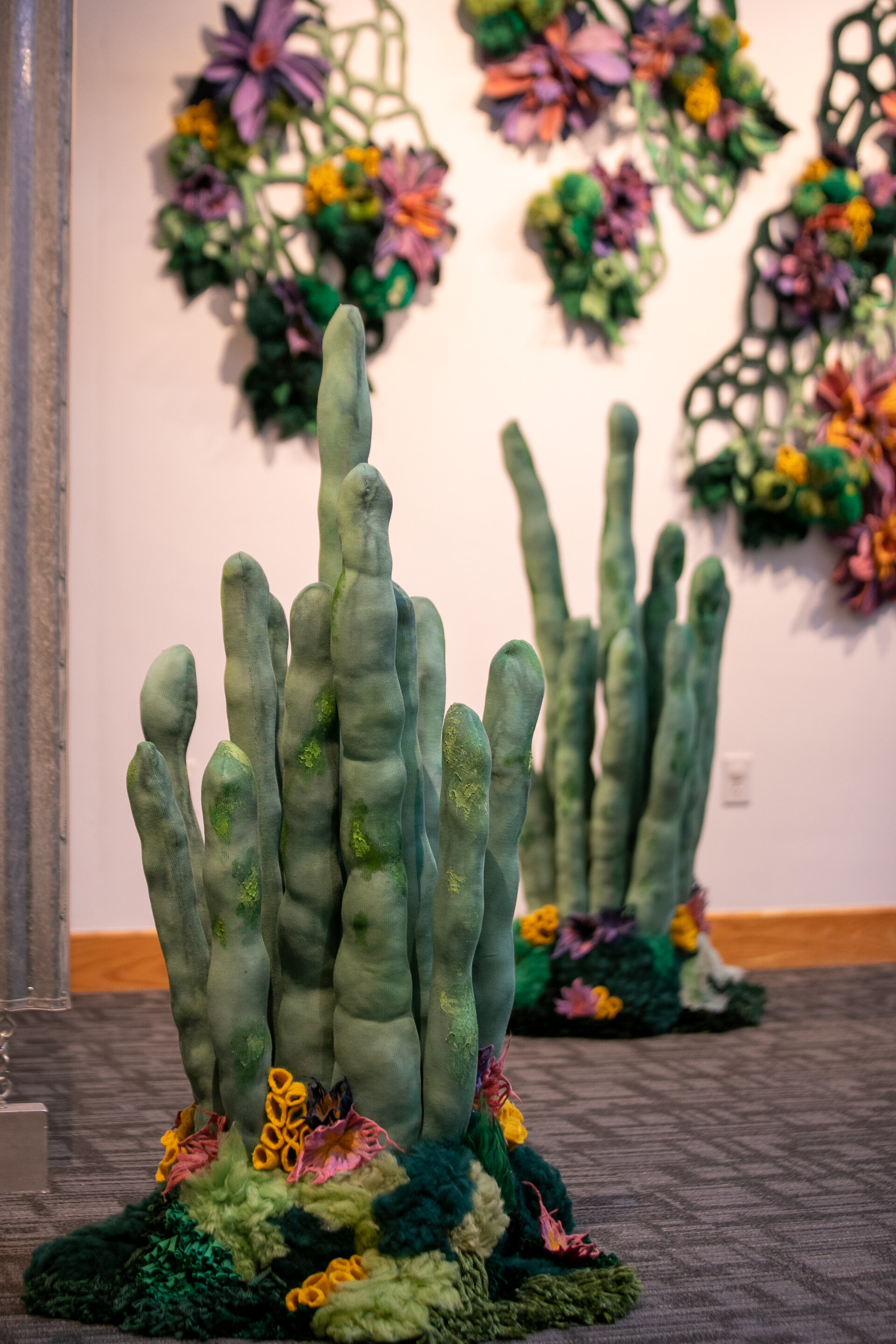
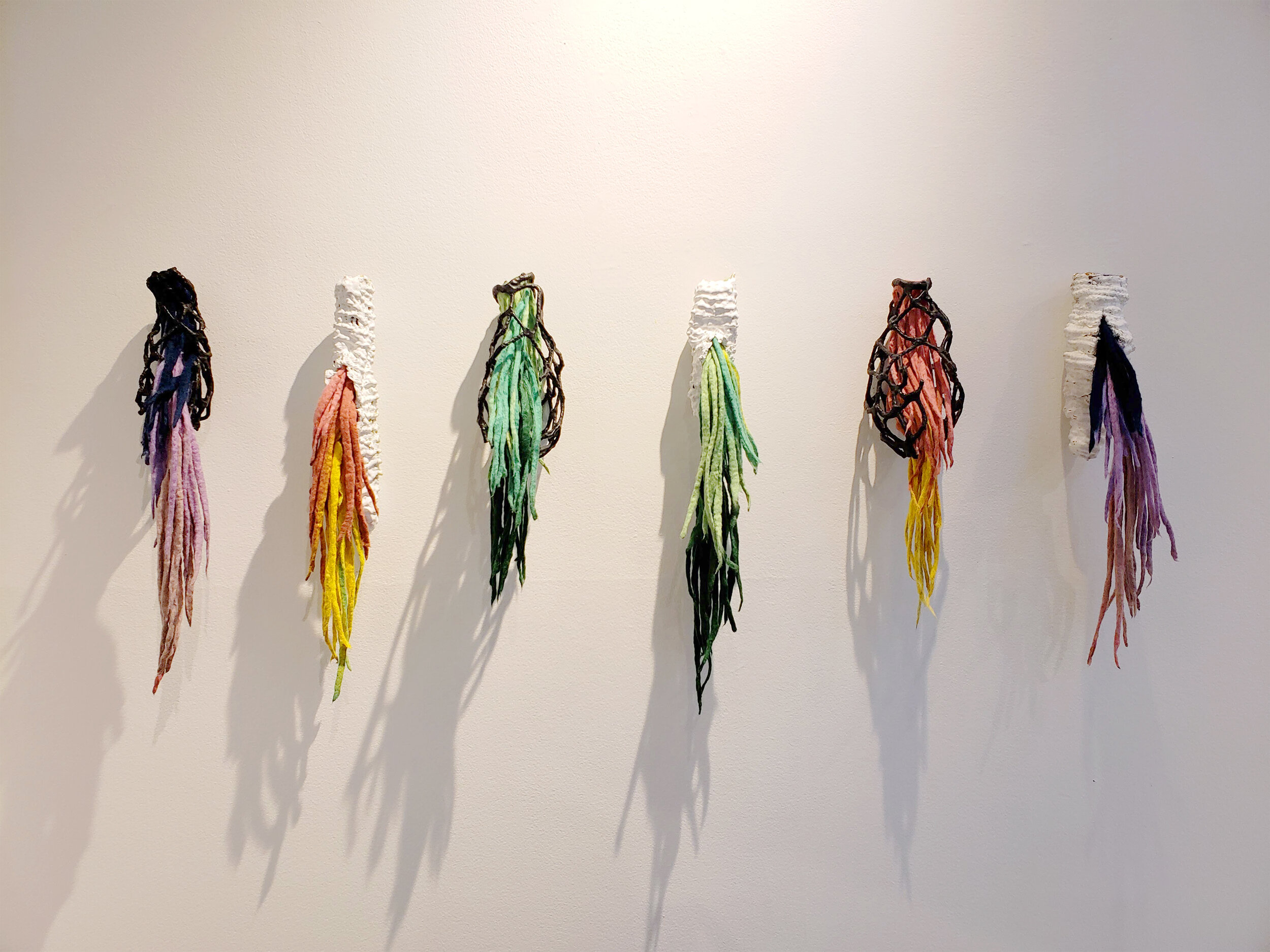
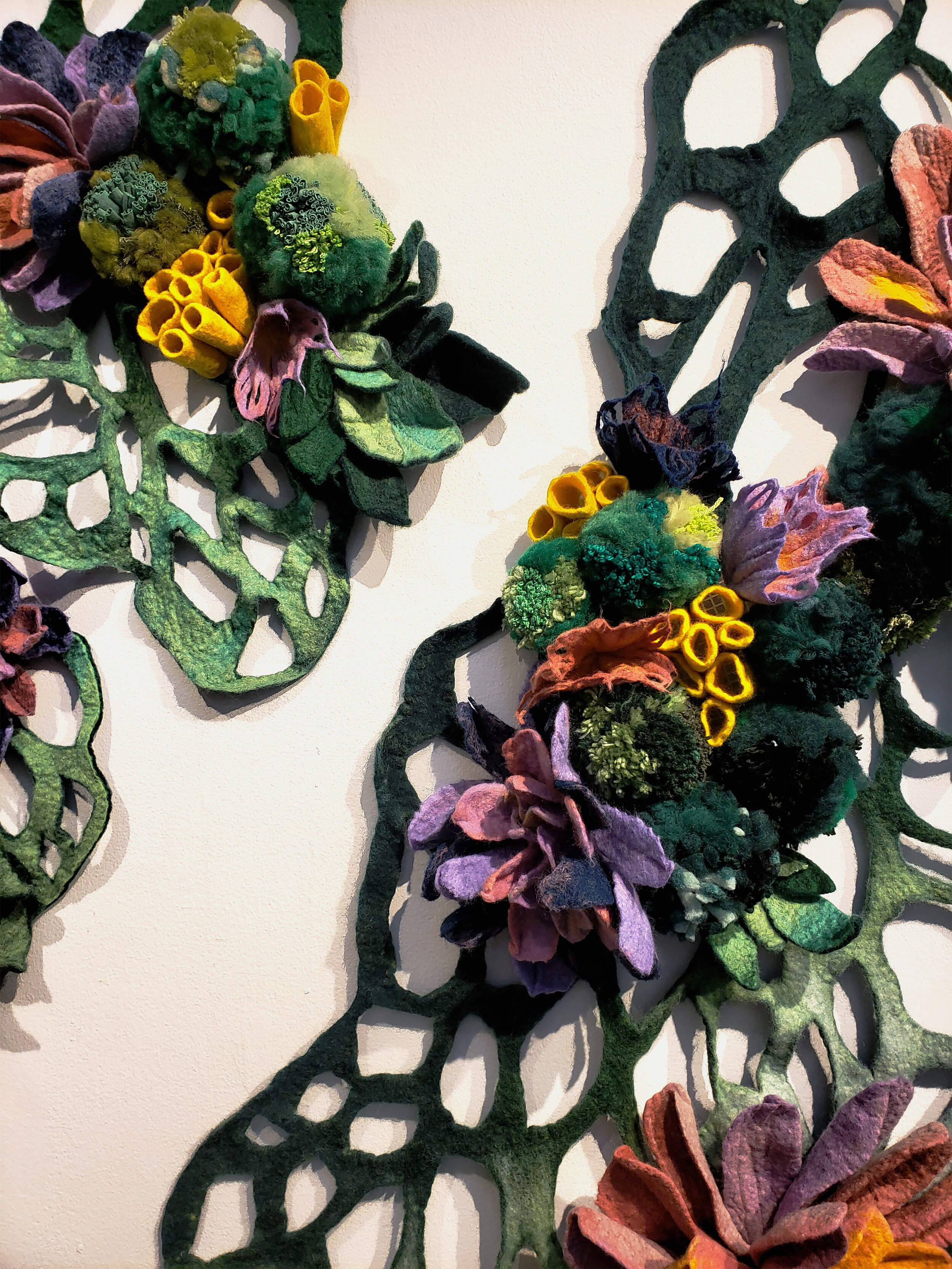

cocooned
In June 2020 I was chosen for a new Artist in Residency program at the Allentown Art Museum in Allentown, PA. I created an installation for Artways, the space dedicated to kids and family and where they hold their free community workshops. The installation was completed and installed in October, coinciding with the reopening of the space after being shut due to Coronavirus. This residency involves a series of 12 workshops occurring over the course of the year where community members can come and make a piece that will then be added into the installation.
The thesis for the installation is stated below.
Think about cocoons. Silky structures spun by various insects to protect them while they transform into something new.
Think about the caterpillar wrapped up inside of its cocoon. The cocoon protects the caterpillar, allowing it to grow and develop into a butterfly with the freedom of flight.
Think about the human being. Humans have cocoons too, but we do not build them ourselves like the caterpillar. Our cocoons are spun not of silk, but of histories and policies that shape how we experience the world.
Not everyone's cocoons are the same. Not everyone's cocoon provides the same protections, comforts and freedoms.
Policies based on race throughout the history of our country have purposely made the cocoons for Black people, Indigenous people and people of color unequal to the cocoons made for white people.
That is never the fault of the human being inside the cocoon, but the fault of the policies that make them.
When we see inequality in our world, we cannot point to the person as the cause. We must look at their cocoon; a collection of policies that are designed to either help and protect that human being or harm and oppress that human being.
It is easy to fall asleep when you live in a cocoon that keeps you comfortable.
It is easy to be unaware of inequality when you are comfortable and asleep.
It is far too easy to dismiss racism when you are comfortable and asleep.
To build a better world, we must recognize each other's cocoons and how and why they are different. We must see inequality as a result of the cocoon and not the person inside. When we do that, we can celebrate our differences, listen to and accept everyone's experiences and truths without judgement and find solidarity in our humanity, in community and move forward towards an equitable future for every human being.
